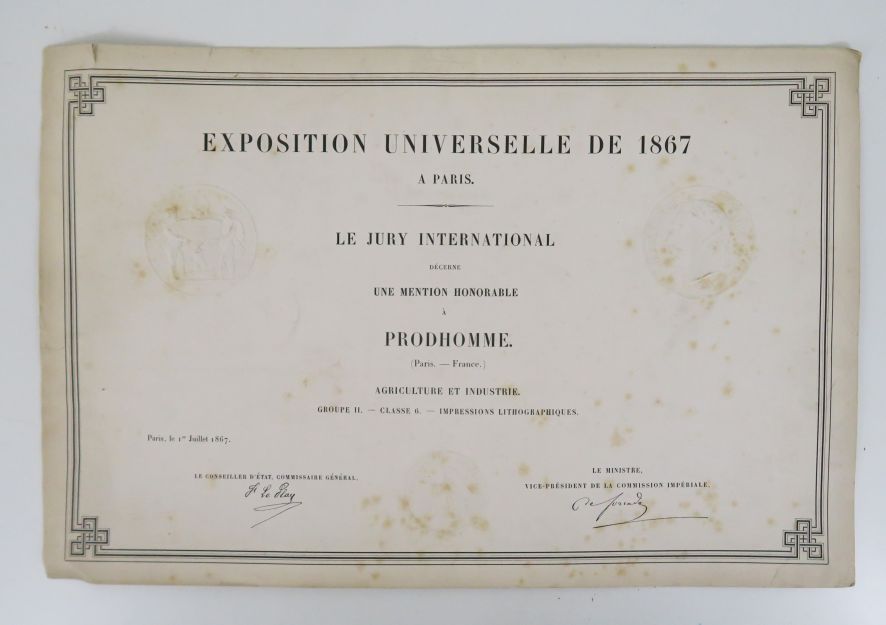Description
Universal Exhibition of 1867. Large certificate of Honorable Mention awarded to Prodhomme for Lithographic Prints, printed, signed by the State Councillor and Commissioner General Le Play and the Minister of Forcade, with dry stamps including one with the effigy of Napoleon III, size 49 x 39 cm. A few small freckles.
628
Universal Exhibition of 1867. Large certificate of Honorable Mention awarded to Prodhomme for Lithographic Prints, printed, signed by the State Councillor and Commissioner General Le Play and the Minister of Forcade, with dry stamps including one with the effigy of Napoleon III, size 49 x 39 cm. A few small freckles.
You may also like
